Designed by the Ahmedabad-based UA Lab, this residence at a dense urban cul-de-sac exemplifies free-flowing indoor spaces integrated with the open outdoors
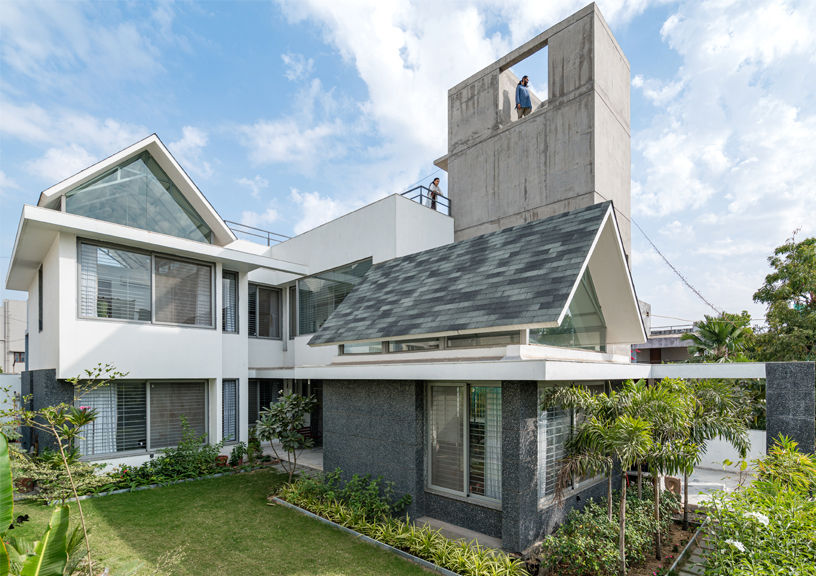
It’s no secret that open outdoor spaces are enjoyed by everyone for refreshment and rejuvenation from closed indoor atmospheres, and as such, are an absolute necessity in today’s architecture and planning. Keeping that in mind, the Gable House was designed in such a way that the garden and courtyard in it were conceptually conceived first on the site plan. This was followed by the sheltered protected residential spaces of the project, which occupies a rectangular plot at the cul-de-sac of a dense urban residential neighbourhood in Ahmedabad. The idea was for all the inner spaces to have seamless connections to the open spaces outside.
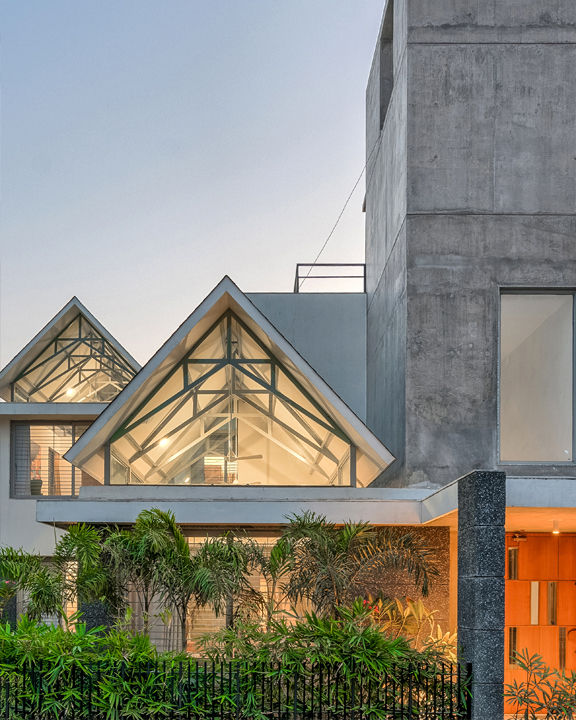
The residential mass is divided into two separate blocks while keeping the garden and courtyard continuous. A layout was developed with open spaces running parallel to the indoor residential spaces. This also allowed for getting maximum daylight in and providing better cross-ventilation opportunities. At the entrance, one is greeted by a play of a low height gable roof and a narrow vertical double height space. Light filters in from above and brightens the narrow space in its entirety. A tactfully designed scissor truss with sleek mild steel members holds the roof above and the living space below. The delicate scissor truss against a simple bold tower displays a contrasting and evocative entrance facade set in the green open space.
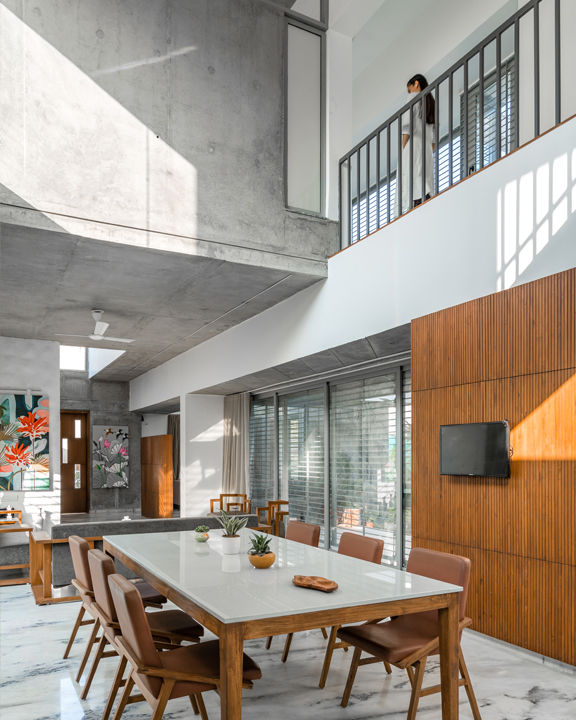
The design layout is about interconnected spaces and volumes. Internally, all the spaces are free flowing within one another. The volume of the formal living space is connected with the main house spaces on only one side, leaving the rest of the three sides open to the garden. The middle double height volume accommodates the family room and the dining space. Interestingly, this double height volume sandwiched between two open spaces provides very good cross-ventilation in the living room area, where maximum time is spent by the family members. The bridge acts as an interesting element within the double height volume.
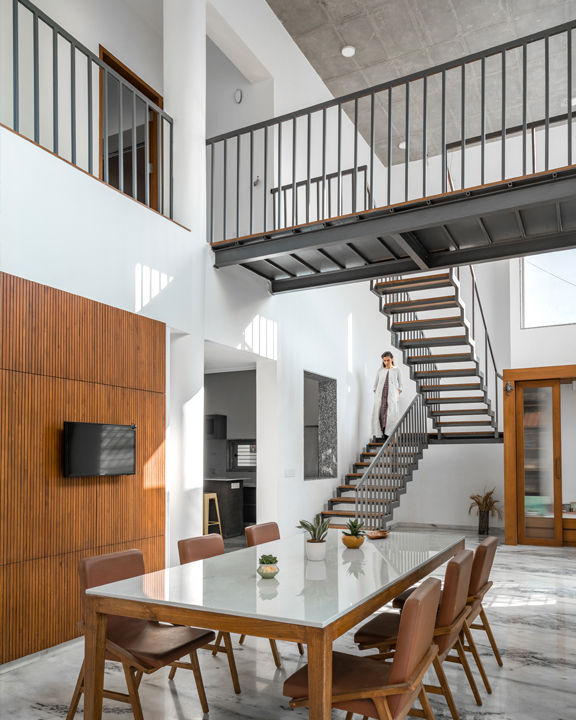
The formal living room and sleeping spaces on the first floor hold up the gable roof. The scissor truss provides uninterrupted clear openings at the two ends. Both the gable ends are kept transparent and protected by clear glass. This allows for a good view of the sky from the inner spaces. The eaves of the gable roof have been worked out in such a manner that it lends the sense of a floating roof.
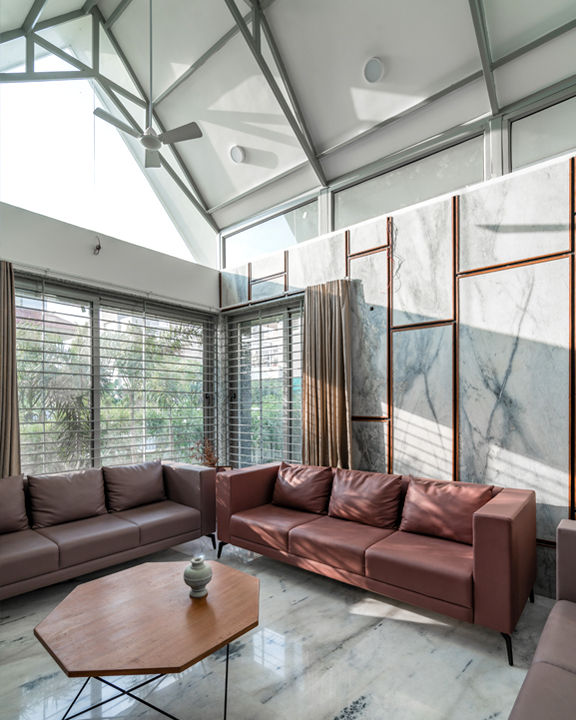
This quality is achieved by providing clear glass windows between the eaves and the wall. As the gable roof is kept floating, natural light enters the inner space from all four sides. This natural light changes throughout the day and during different seasons, which makes the experience within these inner spaces rich and mesmerising. The Gable House thus provides a rich variety of spaces, which can be enjoyed during different times of the day and in different seasons. All the spaces are well integrated within each other as well as with the outside.
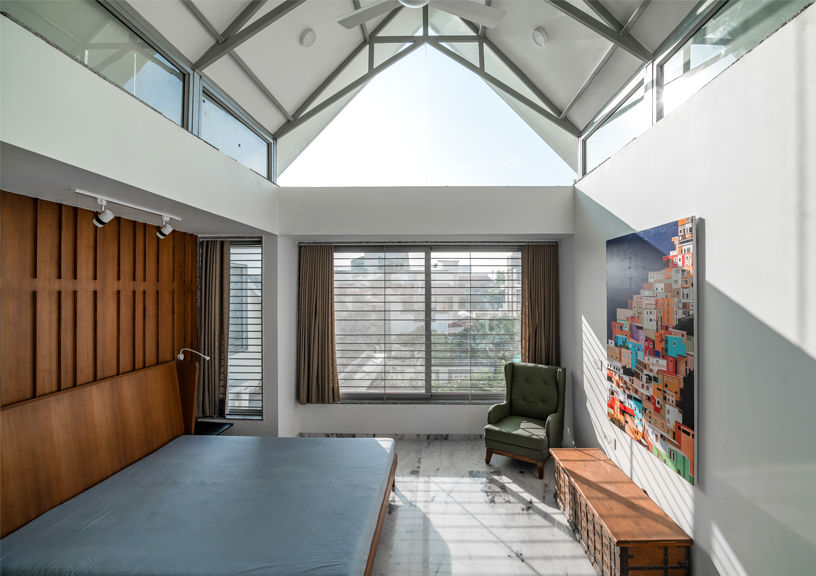
Factfile
Principal designer: Vipuja Parmar, Krishnakant Parmar
Design team: Kruti Shah, Bageshri Thakar
Furniture and furnishing: Chandni Doshi
Landscape: Sushma Sawant
Structural consultant: Casad Consultant
Site engineer: Keyur Patel
Plot size: 475 sq m
Gross built area: 387 sq m
Year of completion: 2020
